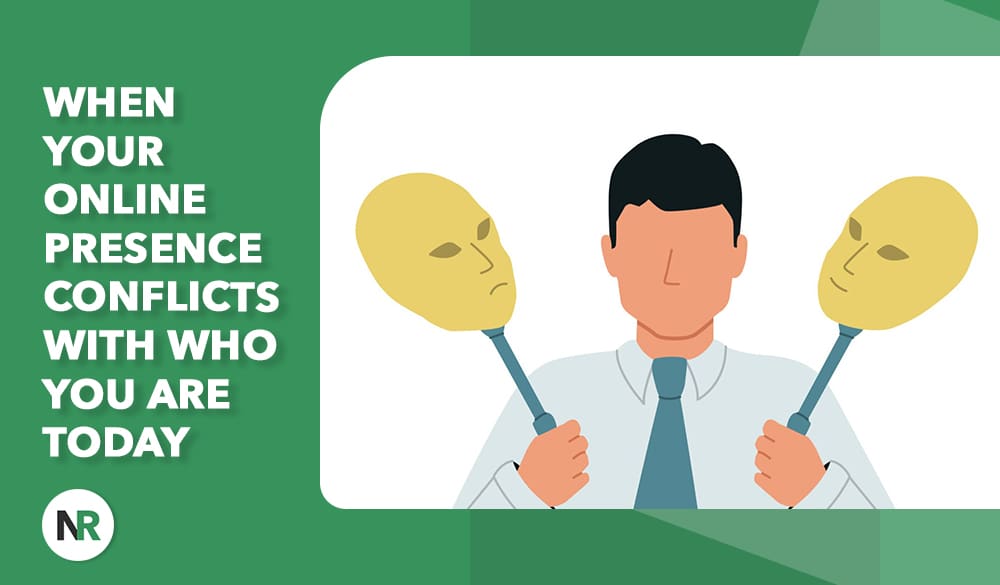Have you ever searched your name online and cringed at what you found? Maybe it’s a social media post from years ago that no longer represents you—or a personal website that still lists a career you’ve since outgrown. When your online presence doesn’t match who you are today, it can quietly shape how potential employers, clients, and even friends perceive you.
Your digital footprint—from your social media accounts to your blog, landing pages, and online directories—tells a story. But when that story is outdated, inconsistent, or incomplete, it can affect your brand identity, customer trust, and the relationships you build both personally and professionally.
When Your Online Self Feels Out of Sync
Most people maintain multiple social media profiles across platforms like Instagram, LinkedIn, and TikTok. Over time, these feeds become archives of different life stages, filled with snapshots that may no longer reflect your values, priorities, or goals.
A strong online presence is meant to support growth—but it can start to hold you back when it no longer aligns with your identity. This disconnect can confuse your target audience, affect customer satisfaction, or dilute how your business name or personal brand appears in search results.
Why Your Online Presence Drifts
There are three common reasons your online presence drifts away from your authentic self:
- Life changes: People move, change jobs, or shift careers. Your social media posts and website content may still reflect your past identity.
- Platform pressure: Algorithms on social media platforms and search engines reward consistency. That can make you hesitate to change your content or update your image, even when your focus evolves.
- Outdated SEO: Old search engine optimization tactics, outdated relevant keywords, or abandoned email marketing campaigns can keep old content ranking and driving irrelevant website traffic long after it’s useful.
When these factors combine, your online persona gets stuck in time—an image of who you were, not who you are.
Signs Your Online Presence Is Misaligned
A misaligned online identity is easy to miss. Look out for:
- Discomfort when viewing old social media feeds.
- Confusion from customers or colleagues about what you currently offer.
- Declining website traffic or mismatched search results.
- Negative reviews from users who expected something different because the content was outdated.
These signs indicate your digital footprint needs attention, as they affect reputation, trust, customer retention, and future opportunities.
Get started with your free reputation evaluation today
Business Impacts of an Outdated Presence
For entrepreneurs and small businesses, a consistent social media presence and a user-friendly website are essential for building relationships and attracting potential customers. Inconsistent messaging across social media profiles, websites, and email marketing can reduce visibility and decrease customer satisfaction.
Monitoring your performance through tools like Google Analytics and regular performance analysis helps identify what’s working—and what’s not. A cohesive brand image builds customer trust, keeps online reviews positive, and gradually allows you to build strong relationships across mobile devices and other channels.
Personal Consequences of a Digital Disconnect
For individuals, a digital identity mismatch can impact mental health and relationships. Feeling disconnected from your social media presence often leads to anxiety or burnout trying to maintain an outdated image.
A mismatched identity also makes authentic connections harder. Friends, partners, or peers may perceive your social media accounts as distant or performative, which can create friction in personal relationships.
Aligning your digital self with your real self helps restore confidence and authenticity online and offline.
How to Audit Your Online Presence
Conducting a full audit helps you regain control of how you’re found and perceived online. Start by:
- Searching for your name and business to review search results, images, and online reviews.
- Checking every platform: social media accounts, website, blog, and online directories or local business listings.
- Assessing relevance: identifying outdated posts, broken links, and inconsistent contact info.
- Reviewing privacy settings: limiting access to old posts and securing email accounts and personal data.
If your profiles don’t match your current goals or personality, it’s time to update them.
Realigning and Rebuilding Your Presence
After cleanup, rebuild with purpose by:
- Creating content that reflects your current voice, values, and goals.
- Using relevant keywords and search engine optimization to reach the right audience.
- Strengthening brand identity with consistent visuals, tone, and messaging.
- Encouraging user-generated content and positive online reviews from satisfied customers.
- Strategically using email marketing, SMS marketing, and social media posts to build community and maintain customer trust.
- Working with a business coach is needed to refine communication and effectively manage your brand narrative.
These steps help your website and social media platforms attract a wider audience while keeping your message clear and authentic.
Protecting Privacy and Security
Maintaining alignment also means securing your online presence. Protect sensitive information by using privacy settings, encrypted email accounts, and two-factor authentication. Regularly monitor your site and social channels for data breaches or suspicious activity.
A secure, user-friendly experience not only protects you but also improves customer satisfaction and trust in your brand.
The Long-Term Payoff
When your online presence accurately reflects who you are today, it builds credibility across every channel—social media, email marketing, landing pages, and beyond. It strengthens your brand, improves search engine performance, and helps potential customers see you as reliable and authentic.
By maintaining authenticity across the web, you protect your reputation, build community, enhance customer retention, and grow website traffic that reflects your current purpose.
Your digital presence should evolve with you. When it does, it stops being a liability and becomes one of your strongest assets.
